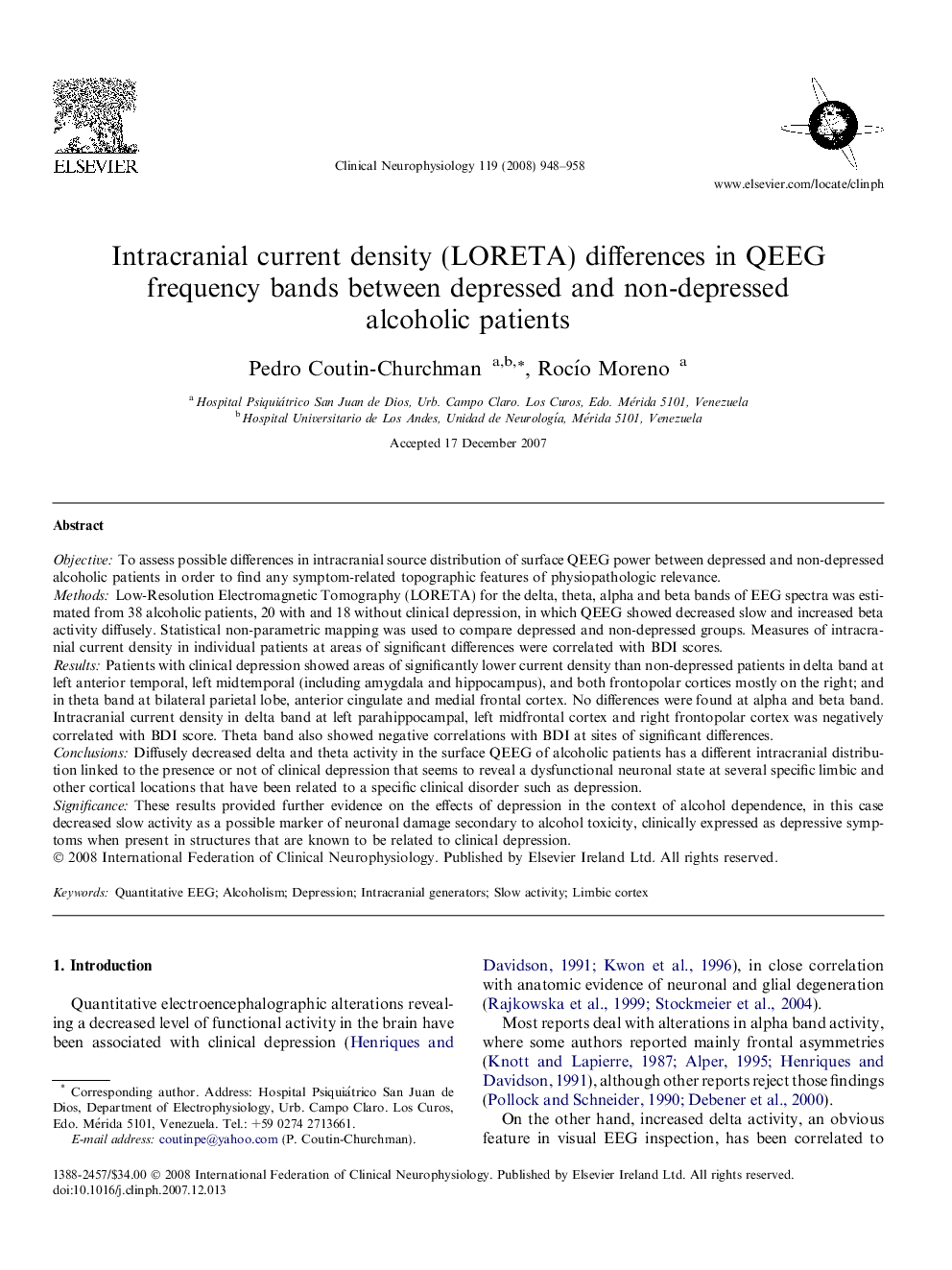| Article ID | Journal | Published Year | Pages | File Type |
|---|---|---|---|---|
| 3046509 | Clinical Neurophysiology | 2008 | 11 Pages |
ObjectiveTo assess possible differences in intracranial source distribution of surface QEEG power between depressed and non-depressed alcoholic patients in order to find any symptom-related topographic features of physiopathologic relevance.MethodsLow-Resolution Electromagnetic Tomography (LORETA) for the delta, theta, alpha and beta bands of EEG spectra was estimated from 38 alcoholic patients, 20 with and 18 without clinical depression, in which QEEG showed decreased slow and increased beta activity diffusely. Statistical non-parametric mapping was used to compare depressed and non-depressed groups. Measures of intracranial current density in individual patients at areas of significant differences were correlated with BDI scores.ResultsPatients with clinical depression showed areas of significantly lower current density than non-depressed patients in delta band at left anterior temporal, left midtemporal (including amygdala and hippocampus), and both frontopolar cortices mostly on the right; and in theta band at bilateral parietal lobe, anterior cingulate and medial frontal cortex. No differences were found at alpha and beta band. Intracranial current density in delta band at left parahippocampal, left midfrontal cortex and right frontopolar cortex was negatively correlated with BDI score. Theta band also showed negative correlations with BDI at sites of significant differences.ConclusionsDiffusely decreased delta and theta activity in the surface QEEG of alcoholic patients has a different intracranial distribution linked to the presence or not of clinical depression that seems to reveal a dysfunctional neuronal state at several specific limbic and other cortical locations that have been related to a specific clinical disorder such as depression.SignificanceThese results provided further evidence on the effects of depression in the context of alcohol dependence, in this case decreased slow activity as a possible marker of neuronal damage secondary to alcohol toxicity, clinically expressed as depressive symptoms when present in structures that are known to be related to clinical depression.
